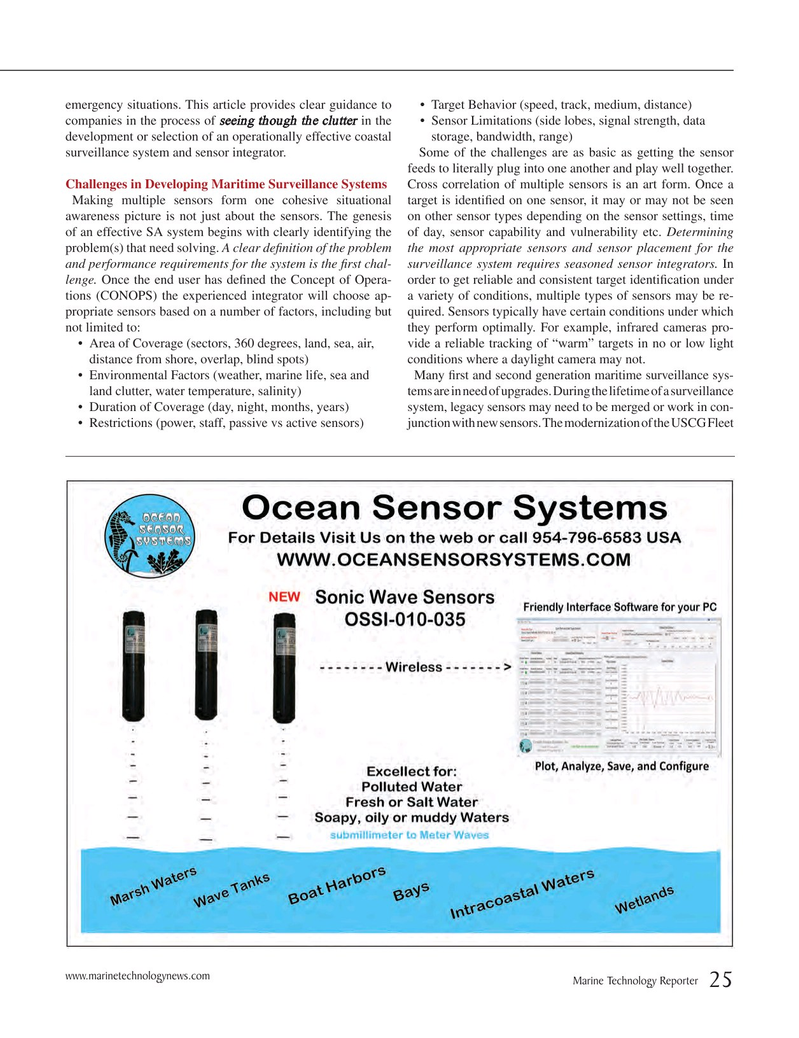
Page 25: of Marine Technology Magazine (September 2015)
Ocean Observation: Gliders, Buoys & Sub-Surface Networks
Read this page in Pdf, Flash or Html5 edition of September 2015 Marine Technology Magazine
emergency situations. This article provides clear guidance to • Target Behavior (speed, track, medium, distance) companies in the process of seeing though the clutter in the • Sensor Limitations (side lobes, signal strength, data development or selection of an operationally effective coastal storage, bandwidth, range) surveillance system and sensor integrator. Some of the challenges are as basic as getting the sensor feeds to literally plug into one another and play well together.
Challenges in Developing Maritime Surveillance Systems Cross correlation of multiple sensors is an art form. Once a
Making multiple sensors form one cohesive situational target is identi? ed on one sensor, it may or may not be seen awareness picture is not just about the sensors. The genesis on other sensor types depending on the sensor settings, time of an effective SA system begins with clearly identifying the of day, sensor capability and vulnerability etc. Determining problem(s) that need solving. A clear de? nition of the problem the most appropriate sensors and sensor placement for the and performance requirements for the system is the ? rst chal- surveillance system requires seasoned sensor integrators. In lenge. Once the end user has de? ned the Concept of Opera- order to get reliable and consistent target identi? cation under tions (CONOPS) the experienced integrator will choose ap- a variety of conditions, multiple types of sensors may be re- propriate sensors based on a number of factors, including but quired. Sensors typically have certain conditions under which not limited to: they perform optimally. For example, infrared cameras pro- • Area of Coverage (sectors, 360 degrees, land, sea, air, vide a reliable tracking of “warm” targets in no or low light distance from shore, overlap, blind spots) conditions where a daylight camera may not. • Environmental Factors (weather, marine life, sea and Many ? rst and second generation maritime surveillance sys- land clutter, water temperature, salinity) tems are in need of upgrades. During the lifetime of a surveillance • Duration of Coverage (day, night, months, years) system, legacy sensors may need to be merged or work in con- • Restrictions (power, staff, passive vs active sensors) junction with new sensors. The modernization of the USCG Fleet www.marinetechnologynews.com
Marine Technology Reporter 25
MTR #7 (18-33).indd 25 MTR #7 (18-33).indd 25 9/1/2015 10:41:40 AM9/1/2015 10:41:40 AM

 24
24

 26
26
